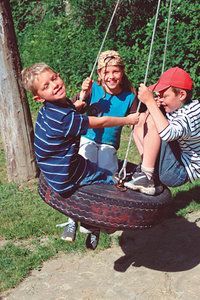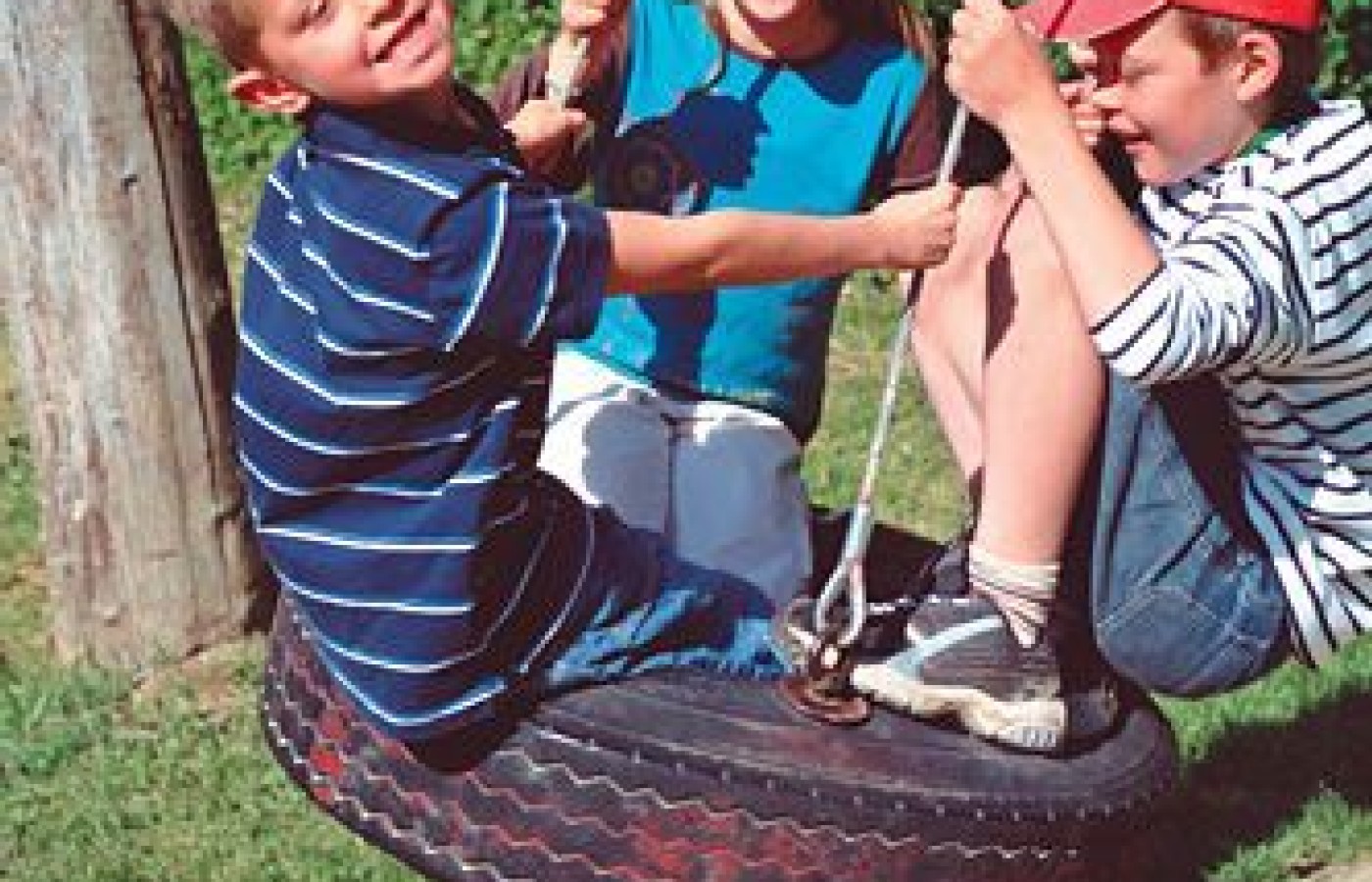Some doctors thrive in a personality-based clinic and have a loyal following no matter what services or equipment they offer, but for most chiropractic offices who are trying to grow and expand, new equipment purchases help us stay relevant and continue to service our client base in the best, most up-to-date manner possible. So, regarding equipment purchasing: should you lease, get a bank loan, or pay cash?
Treating the Pediatric Patient (Part 2): Sacro-Occipital Technique
In his 1967 text, The Science, Art and Philosophy of Sacro Occipital Technique, Major Bertrand De Jarnette made the following statement: "The only true subluxation you ever see must be in a child prior to the age of seven years. If this subluxation goes uncorrected, it becomes a primary source of stimulus through life, but the tombs of distortion, which form from one traumatic experience to the other, soon bury this primary subluxation under that 'tomb of distortions.' ... The subluxation that all of us worry about occurred some time between birth and the seventh year of life, and the remedy would of course be careful chiropractic care from birth through the seventh year of life."
Even in the early stages of the development of his technique, De Jarnette understood the long-term ramifications of the subluxation and its effect on the functioning potential of the human nervous system. He dedicated his life, and inspired others to dedicate their lives, to the pursuit of excellence in the detection and correction of spinal and cranial subluxation complexes.
SOT, as developed by De Jarnette, is based on a category system of classifying subluxation patterns into three distinct, identifiable – yet interrelated – systems of body reaction. Through the use of specific indicators, these subluxation patterns can be located and corrected with greater accuracy, ease and efficiency.

To learn more, I interviewed Dr. Martin Rosen, a leading authority in this arena. In addition to being a certified SOT spinal, cranial and pediatric practitioner, Dr. Rosen serves as president of the Sacro Occipital Technique Organization-USA, chairs the SOT Board for the Academy of Chiropractic Family Practice and serves on the editorial board of the Journal of Pediatric, Maternal & Family Health – Chiropractic.
Can you share with readers who may have never seen or read about SOT the benefits infants and children may derive from this gentle technique? SOT recognizes the importance of the major controlling systems in the body: the dural meningeal system and its effect on the movement of cerebrospinal fluid (CSF), the respiratory system, the hormonal system and of course, the nervous system. De Jarnette developed analysis and correction systems to determine which of these systems are functioning aberrantly, and the most effective and efficient way to restore function and balance to them. In addition, there are several adjusting methods that can be used to remove / reduce these subluxation patterns, dependent on the specific needs of the patient.
In the pediatric population, this is of paramount importance for several reasons. Besides the obvious necessity for different adjusting procedures to deal with the delicacy of the pediatric spine, we can also address the different types of subluxations – especially meningeal – that are often primary in this segment of the population. In the SOT system of analysis and correction, the cranium is taken into consideration and evaluation and correction of cranial subluxations are also addressed. Since brain growth, development, imprinting and susceptibility are greatest in the first two years of life, this skill set is paramount is achieving full nervous system function. After all, 80 percent of the central nervous system is located in the brain.
In your experience and those of your colleagues, how has SOT improved quality-of-life outcomes for the pediatric population? While SOT focuses on the removal of subluxation patterns in the spine and cranium, there is an entire branch of the technique that deals directly with the viscerosomatic reflex arc and the sympathetic nervous system. It is known as chiropractic manipulative reflex technique (CMRT). While the main goal of chiropractic is not to relieve symptoms, the reality of the situation is that a great percentage of patients who enter chiropractic offices come (before they are educated) for symptomatic relief. With the pediatric population in particular, these symptoms are often visceral in nature. In many instances chiropractic is the last step or hope for many of these children before or even after invasive medical procedures have been introduced.
Over the past 30 years in private practice, on several chiropractic research boards, at research conferences and on editorial boards, I have been privy to documented cases in which myriad of conditions have been resolved by SOT chiropractic care. I have adjusted and seen other chiropractors help children with asthma, colic, ear infections, seizure disorders, ADHD, ADD, Asperger's, autism, selective mutism, ambulatory issues, aphasia, learning disabilities, processing issues, failure-to-thrive diagnosis, chronic constipation, enuresis, migraines and chronic headaches, sports injuries – including head injuries – birth trauma, nursing issues and numerous other conditions.
Many of the conditions these children originally presented with resolved completely under chiropractic; in other cases, the symptomatology was greatly reduced, increasing the functional capability of the child and reducing the burden on the family as a whole.
Over the past few years, many studies have been published regarding pediatric applications of SOT. Please share some of the studies that have been published and where readers might find them. SOTO-USA, of which I am the current president, has run four annual research conferences in conjunction with its annual symposium. All the research abstracts can be viewed on our website: www.soto-usa.org. Also, our research board, directed by Dr. Charles Blum, has had numerous papers accepted at the ACC/RAC Aesearch Conference, IRAPS Research Conference, WFC Biennial Congress, and the ICPA Freedom for Family Wellness Conference. These too can be accessed from our website, along with an entire section of peer-reviewed research papers.
We have also published two Compendiums of Sacro Occipital Technique that include dozens of peer-reviewed research articles from 1984-2005. Other SOT-related research studies have been published by McCoy Press (http://mccoypress.sharepoint.com), in the Annals of Subluxation Research, the Journal of Pediatric, Maternal & Family Health Chiropractic and the Journal of Craniomandibular Practice, and in several chiropractic trade / association publications.
Some of the specific pediatric-related studies I have personally published include "Chiropractic Care of Pediatric Nonmusculoskeletal Conditions: A Case Series," "SOT Case Management of a 2 1/2-Year-Old Female with a Thirty-Five Degree Scoliosis and Two Hemivertebra," "Sacro Occipital Technique Management of a Thirty-Four-Year-Old Woman with Infertility: Outcome of Adjusting Protocols Showing a Positive Response to Chiropractic Care," "Chiropractic Care of a Two-Year-Old Diagnosed with Reflux and a Hiatal Hernia," and "SOT Chiropractic Care of Six-Year-Old Boy Diagnosed with Asperger's Syndrome and Related Conditions."
In the case series, I studied 34 children with a variety on nonmusculoskeletal conditions and their response to SOT chiropractic care. Thirty-three of the 34 children had positive results, with only one reporting no change in their condition.
You recently completed an extensive chapter on SOT in the second edition of the Pediatric Chiropractic textbook. What are you hoping teach the doctors and students regarding SOT? The purpose of writing this chapter was to familiarize chiropractors with the philosophy, art and science of SOT. I don't think it is plausible to learn how to perform chiropractic adjustments by simply reading a manual, but I do think seeing how a technique is utilized gives the practitioner a window into its application. If seeing the application and understanding the why and how of the technique piques one's interest, then the chiropractor can take the next step to learn how use it in their practice.
I also hope to take the mystery out of SOT. I hear many erroneous statements and comments when teaching at colleges, for the ICPA and SOTO-USA, about SOT. I hope seeing it applied in this book will dispel those assumptions. I would hope that other chiropractors would get a sense of the depth, intricacy and at the same time simplicity of using SOT in the pediatric population.
Dr. Rosen teaches the SOT Pediatric Spinal and Cranial Adjusting Seminars (Level 1) through the ICPA, as well as Integrative Pediatric Spinal and Cranial Adjusting Protocols (advanced), Pediatric Viscerosomatic Organ Reflex Balancing Techniques, and Nutritional Correlations and Chiropractic Care During Pregnancy, approved by the Academy of Chiropractic Family Practice for ICPA diplomat and CE credit. SOTO-USA also has an SOT spinal and cranial certification series. For addition details, visit www.soto-usa.org. To contact Dr. Rosen with questions and comments, visit www.wellesleychiro.com or e-mail wellesleychiro@verizon.net.



